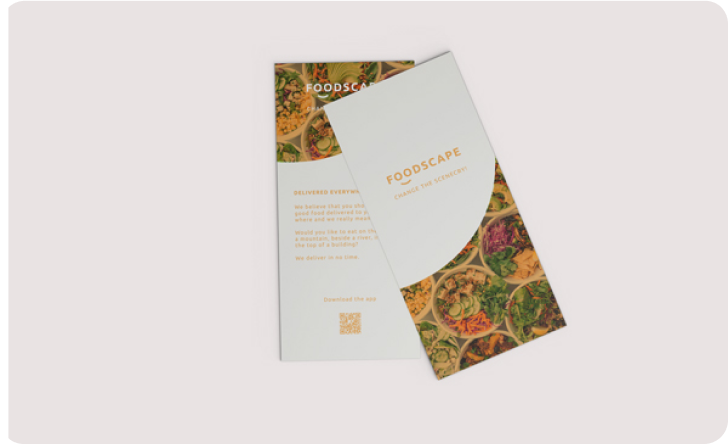A brochure with a beautiful design but weak copy is like a sports car with no engine—it looks great, but it’s not going anywhere. If you’re investing in professionally printed brochures, your words need to work just as hard as your layout.
Great copy in a brochure doesn’t just mean listing what your business does. It tells a story. It creates an emotional connection. It guides your customer from curiosity to conversion. And that only happens when your messaging is clear, focused, and written with their needs in mind.
Jump To a Section:
How to Make Your Brochure Copy Persuasive
Design grabs attention. But copy drives action. Too often, businesses spend most of their energy on layout, photography, and finishes, only to fill their brochure with generic descriptions, jargon, or a long list of services. The result? A brochure that looks polished but doesn’t perform well.
Words matter because people don’t buy features—they buy outcomes. They want to know:
- How does this help me?
- Why should I care?
- What’s the next step for me to take?
Think of your brochure copy as a conversation with your customer. You’re not just explaining what you offer, you’re translating it into real-world value that solves a problem, fulfills a need, or makes life easier for your customer.
Remember: Your brochure isn’t just about what you do. It’s about why that matters to your customer.
The #1 Brochure Copywriting Mistake
Here’s the biggest trap most brochure writers fall into: they focus on features, not benefits.
Let’s break that down:
- Feature = What something is
- Benefit = Why it matters
If your brochure says, “We offer 24/7 service,” that’s a feature. But when you say, “Never wait for support — our 24/7 service keeps your business running no matter what,” that’s a benefit.
Always ask yourself: “So what?” Why should your customer care? What problem does that feature solve for them?
When you start with the customer’s needs, your copy instantly becomes more compelling. You’re not just selling services—you’re selling solutions.
The Five Core Brochure Copy Sections
We recommend a simple, benefit-led structure that works for nearly any industry:
- Use the headline and tagline to hook the reader. Be clear, not clever. Let them know what you do and why it matters.
Example: “Simplify Your Workflow” or “Software that saves time” for a tech SaaS company. - Introduce who you are. Don’t start with “We’ve been in business since 1999.” Instead, lead with who you help and how. Keep it human, not corporate.
- Clearly state product or service descriptions. Use the features-to-benefits rule. Group offerings into sections with short headers and bullet points.
- Include social proof. Share client testimonials, logos, or stats. Real-world proof builds trust fast.
- Make sure you have clear Call-to-Actions (CTAs). Don’t assume they’ll know what to do next. Whether it’s “Book a free consultation” or “Visit our store,” spell it out clearly.
Bonus Sections to Boost Brochure Impact
If space allows (or if you’re creating a multi-panel brochure), these extras can increase clarity and conversion:
- Pricing or Packages: Be transparent. It builds trust and helps filter serious buyers.
- FAQ or “Who It’s For” Section: Help people self-identify. This is especially useful if your service isn’t for everyone.
- Location & Contact Info: Include your full contact details—business name, address, phone, website, email—plus a QR code for easy mobile access.
- Offer or Promo: If you’re promoting a seasonal offer, make it stand out with urgency. Example: “Get 15% off your first service when you book by July 31.”
Copy That Connects = Brochures That Convert
At the end of the day, your brochure is more than a printed piece—it’s a pitch. It’s your story, your offer, and your value proposition, all in one.
Write it like you’re speaking directly to your best customer. Focus on benefits. Add proof. End with a clear next step.
With the right mix of thoughtful design and customer-first copywriting, your brochure can become your hardest-working salesperson.
